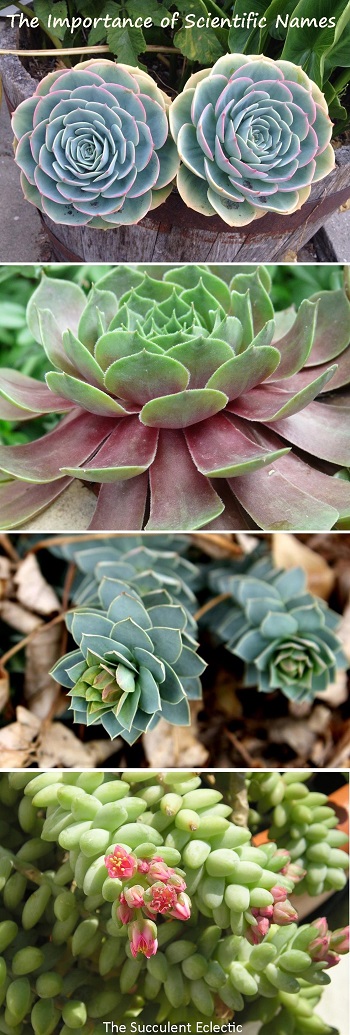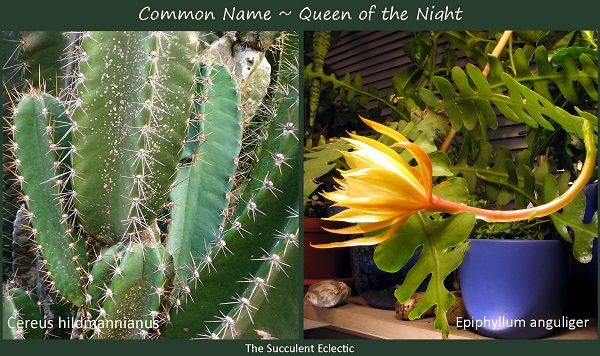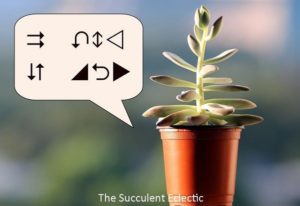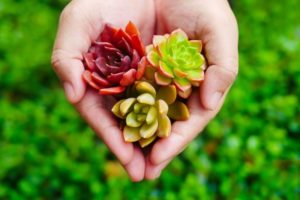You love succulents, but there is just so much to learn. How to water them, what soil they need, which can take the cold and which cannot. Surely those long, complicated, multi-syllabic Latin names can wait, right? Instead, you’ll gather your panda plant, calico kitten and your favorite hens and chicks and learn to care for them. Surely, that’s what matters? As it happens, the scientific names of plants are important for you and your succulents. Sometimes, knowing the correct botanical name can be a matter of life and death. Literally.
I am not suggesting that you should never ever use common names. But understanding the scientific names can help to ensure the health and well-being of your family as well as your plants!
Succulents’ Botanical Names Are Important
In this Post We'll Cover:
{Please note, some links in this post may be affiliate links to sites that pay me a small commission if you click on the link and make a purchase. This commission is at absolutely no cost to you. I only recommend products and companies that I have worked with and truly love! ~Kat}
What are the Scientific Names of Plants?
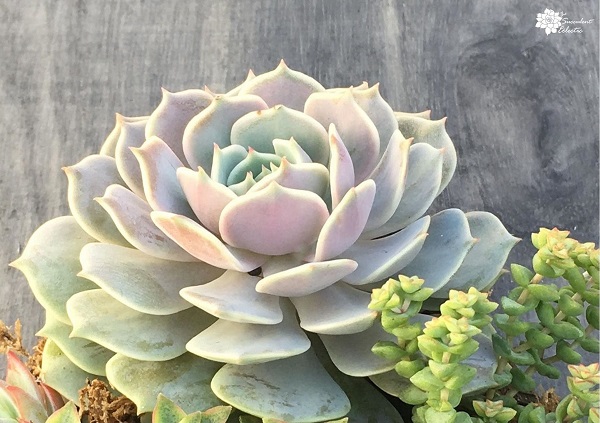
Every plant humans have ever known has a unique, scientific name. This scientific name is made up of two parts. The first part of the name refers to the plant’s genus and is capitalized. The second part is the species name and is written lower case. This lovely succulent here has a scientific name of Echeveria leisel. Echeveria is the genus, and leisel is the species. Many of you may recognize that this is not how this variety’s name usually appears. What is missing is the varietal name or the name of this specific cultivar. Properly, this would be labeled Echeveria leisel ‘Lola’. Typically, for large and well-known groups like echeveria, the name is often provided without the species name included, so you will most often see this variety labeled as Echeveria ‘Lola’.
What does all of this matter? With complete scientific names of plants, you will always be referring to that specific plant variety. Not its cousins, or parents or look-alikes, but that specific plant.
Common Names of Plants
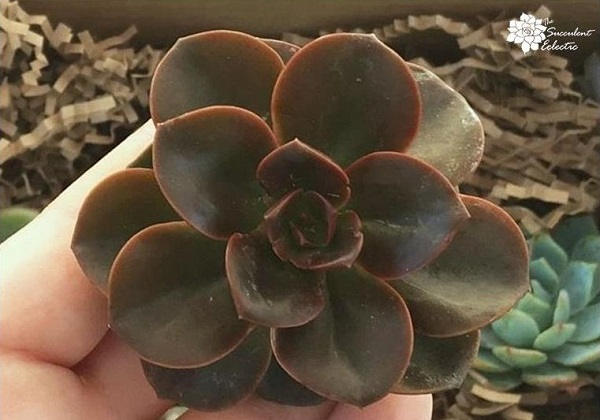
While every plant has just one scientific name, it may have many different common names. In theory, these common names should be easier to remember than the complex, scientific names. Common names are often descriptive of the look or growth pattern of the plant. For instance, echeveria are often called “rosette succulents”, for their shape, or “hens and chicks” for their growth pattern. This Echeveria ‘Melaco’ might be called a “black rosette succulent” or a “black hens and chicks”. Sometimes, different common names are more popular in one geographical region than in another. Often, there is a poetic appeal to the name — “Jewels of Opar” or “dragon’s blood stonecrop“, or, I suppose, “dead rat tree“… But some are just downright odd. What might “bastard cobas” be intended to describe, I wonder? Or “droog-my-keel“?
As it happens, the last two common names referred to above are for the same plant! If I said my very favorite succulent was a bastard cobas (it’s not) but your fave was a droog-my-keel, we might never realize we were talking about the same plant. While this can certainly lead to confusion, the bigger problem is when very different plants share the same common names. When different succulents go by the same common name, the confusion can prove deadly.
Use Scientific Names of Plants for Proper Care
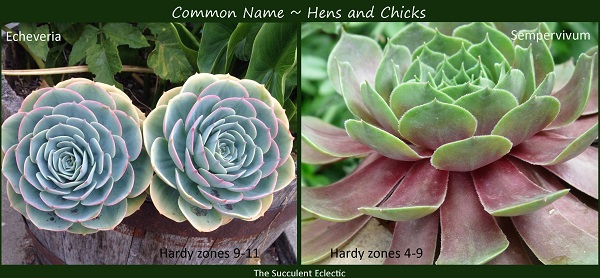
Both echeveria and sempervivum share the common name of hens and chicks. This name refers to the growth habit of the mother plant forming multiple smaller offspring surrounding it. Both like lots of sun, develop beautiful colors in response to stress and are easy to propagate. But you had better know which hens and chicks you are growing come winter. Echeveria are hardy just to zones 9-11. One quick freeze can kill an echeveria. Sempervivum are hardy zones 5-9, with some tolerating zone 3 winters! Sempervivum can handle frigid temps from -20 to -40 degrees F (-28 to -40°C)! If you garden in the midwest and expect your hens and chicks to survive the winter — you could be looking at mush come spring. Relying on the common names could result in dead plants. I told you that scientific names of plants can be a matter of life or death!
Protect Your Pets with Scientific Names of Plants
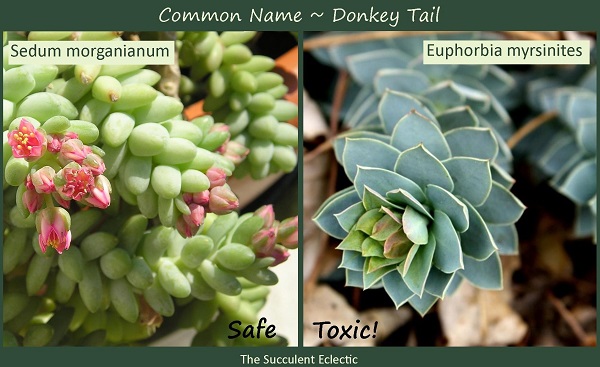
If you Google pet-safe succulents, you are sure to find articles saying the charming “donkey tail” is perfectly safe for your pets. And, when they mean to refer to Sedum morganianum — they are right! This plant is safe for pets, even if they chew on it, or bat the leaves about. However, it chills me that many of these articles that provide advice for you to keep your pets safe, do not specify beyond the common name. I can only assume they do not know that the highly toxic Euphorbia myrsinites is also called a donkey tail. While the euphorbia is a lovely plant, and well worth growing, it could be downright tragic if a pet owner bought it and believed it safe for their puppy to chew on.
Scientific Names of Plants Matter
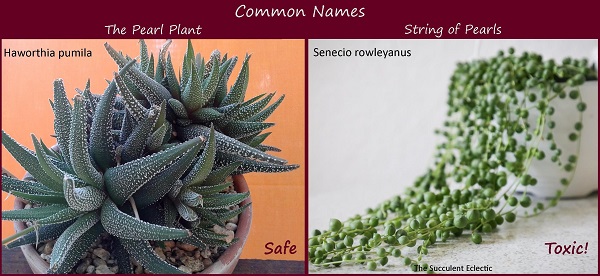
This potential confusion is not an idle concern of what if. Another plant that shows up on lists of pet-safe succulent plants is Haworthia pumila, commonly called “the pearl plant”. A widely respected blog focused on the home did a post on pet-safe succulents and correctly listed the pearl plant as safe for your pets. However, the picture originally posted with the plant’s name was of the “string of pearls”, which is actually very toxic. It is easy to understand the mistake, right? The pearl plant, string of pearls – seems pretty similar. But Haworthia pumila is safe for pets, while Senecio rowleyanus is toxic.
I do understand that the scientific names of plants can be hard to pronounce, and even harder to spell. And that is why most people like using the common names. But surely an article or blog post dedicated to helping people enjoy plants while keeping their beloved pets safe could and should use both the common names and the scientific names for clarity.
Common Names Confusion
Let’s say you live in a mild climate and have no pets or small children. So, really, you could ignore scientific names of plants and do just fine, right? Not so fast. Let’s say you have a large hanging basket and you want a fragrant plant to fill it. Why not get a Queen of the Night? They are hard to find but well worth the hunt! And you track one down, order it online and cannot wait to get it! Until… you open it. You didn’t receive Epiphyllum anguliger, a smooth-leafed, cascading plant that grows just 18-30 inches, and would be perfect for your basket. Instead, your Queen of the Night is a Cereus hildmannianus, an upright cactus loaded with fearsome spines, and growing to 33 feet tall! But there is no point yelling at the seller. They sent you what you ordered – a Queen of the Night.
Offensive Common Names for Succulents
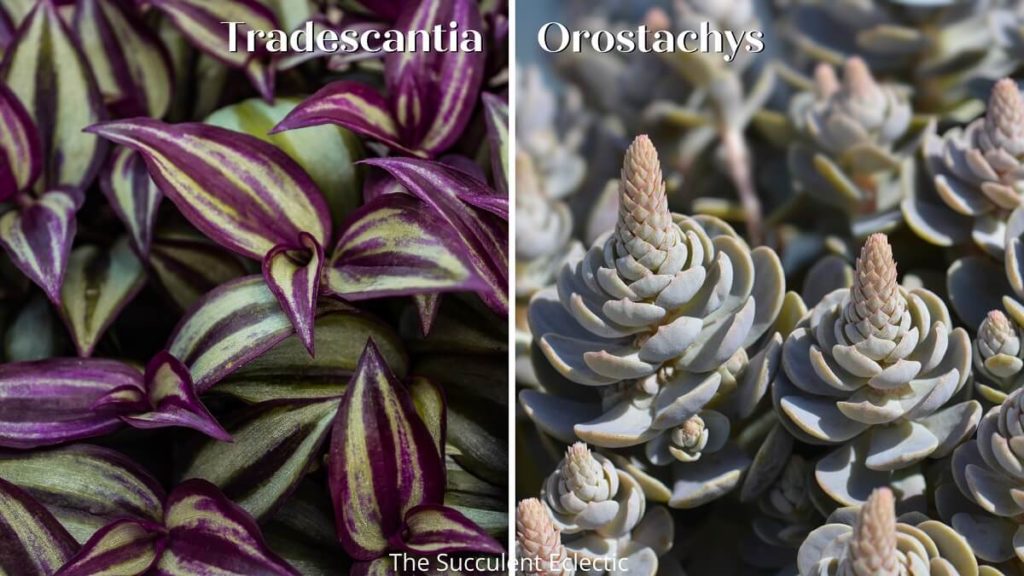
In addition to common names causing confusion that can risk the welfare of your plants, pets and little ones, some common names for succulents are downright offensive. What’s worse — most people who use these common names have no idea at all that they are based on racist tropes! Ugh! Case in point, the lovely striped Tradescantia zebrina is often referred to by the common name “wandering Jew”. Most people assume this is a reference to the Biblical story of the Jews in the desert, right? Nope. The “wandering Jew” is a fictional character dating back to the 1400s, invented and employed to spread antisemitism. I know I don’t want to support that!
And the “Chinese dunce caps” is not just an unpleasant name that utterly fails to capture the elegance of the silver rosettes of Orostachus iwarenge, but it’s based on racist mockery of the traditional headwear worn by Chinese farmers working in their fields. The broad, conical hats kept the sun off their face, neck and shoulders. As someone who suffered from plenty of childish taunts as a kid, I don’t want to continue to use some bully’s name-calling, even if it had never been aimed at me.
Don’t get me wrong. I do NOT believe someone is a racist just because they use these common names. The vast majority of those who do use them don’t even know they are racist. And I certainly don’t like it when someone bullies another person because they did use one of these names out of ignorance. Bullying is bullying in my book! But surely, we can all strive to do better. Now that you know the stories behind these names, I hope you’ll find another way to refer to them. I say — embrace scientific names, Latin and all! But if you must have common names, let’s use “spiderwort” for Tradescantia and “dunce cap” for Orostachys. Thanks!
What’s In a Name?
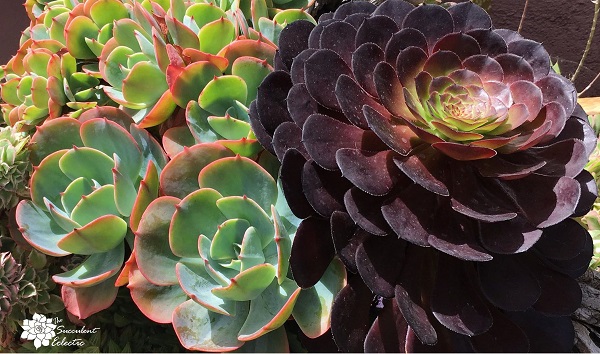
So, what’s in a name? Shakespeare tells us that changing something’s name doesn’t change its nature. But that is exactly my point. If you want a specific plant’s qualities, you must be able to ask for it by its specific name. Don’t worry if you mangle the pronunciation. That is not what is important. And anyone who would judge you by your pronunciation of scientific names is not into gardening for the right reasons.
I’m not saying you should never use the warm and fuzzy common names for the plants you love. I won’t judge. It feels more affectionate, like a nickname, doesn’t it? I think of it this way: My mother was always Mom to me. But, when she was in the hospital, and I needed to get to her — not just some random woman who bore some resemblance to her — I’d rattle off her full name and had her social security number ready. When the right plant truly matters — use its scientific name.
Questions, comments, critiques? Bring ’em on! 🙂

P.S. Please sign up for my FREE course, 7 Steps to Succulent Success! Thank you!
P.P.S. Why not join my Facebook Group for succulent-lovers? We talk succulent care, propagation, identification and design. It’s a warm and welcoming group that would love to meet you!
